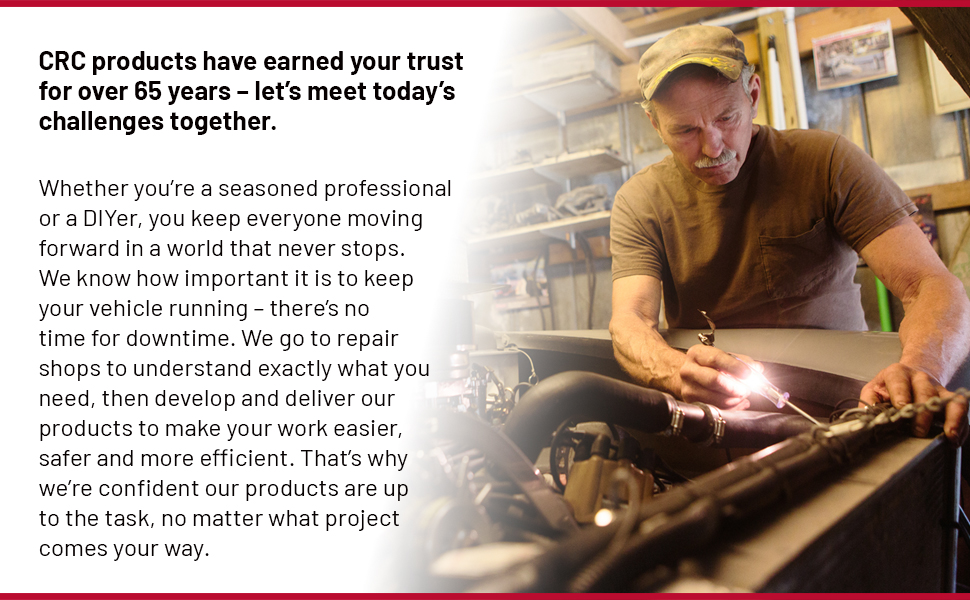






⚡ Clean Fast, Drive Faster: Unlock Your Engine’s True Potential!
The CRCGDI IVD Intake Valve & Turbo Cleaner is a high-performance engine maintenance solution designed to remove up to 46% of GDI intake valve deposits within an hour. Featuring the industry’s highest concentration of PEA detergents—150 times stronger than standard fuel additives—this product installs easily through the air intake system to clean both intake valves and turbo components, enhancing engine efficiency and longevity.




| Manufacturer | CRC |
| Brand | CRC |
| Model | 05319 |
| Item Weight | 15.2 ounces |
| Product Dimensions | 11.1 x 8.3 x 8.1 inches |
| Item model number | 05319 |
| Is Discontinued By Manufacturer | No |
| Exterior | Machined |
| Manufacturer Part Number | 05319 |
| Voltage | 12 Volts |
E**V
Helps!
I used this this weekend on my 2001 car with 65,000 miles on it, it also has a mpi type of injection instead of the gdi as it is commonly used on. The car did not smoke white once during it's use spraying the production in as some have mentioned but it did idle rough as soon as I disconnected the air intake hose from the throttle body. I don't think the spray itself made the car idle any worse. But when the spraying was done, removed it and reconnected air intake hose and it immediately idled smoothly again and then I shut it off and let it sit for the time required. After that time I took it for a drive which was still smooth, but after a while of driving the check light flashed a few times off and on and then went out. Sometime thereafter the big cloud of white smoke came out of the exhaust and then nothing else out of the normal. Now today, a day later I noticed the car is idling as smooth as it did when it was new and also is very hard to hear running it is so smooth and starting is better too. I have to guess that it did work. It has increased take offs and overall power so I suspect it will affect the gas mileage too, when I check that.Thank you.
R**E
I'm a mechanic, works great!
Tried this in a 1.6 Hyundai Gamma II GDI engine that they put in the Kia Soul's. (Yes, Hyundai makes a lot of Kia's parts, including that engine). The proper way to clean intake valves on a GDI (direct injection) engine is to REMOVE the intake manifold and walnut-blast the back side of the intake valves. BIG JOB, and not always necessary. I inspected the intake valves with a borescope BEFORE and AFTER I used this product. It cleaned the intake valves very well! I've long used CRC products, and this will be another one I recommend every oil change, because, why NOT! Keep those valves as clean as you can, it will improve gas mileage and prolong the life of your engine. It will prevent carbon build up. NOTE: If your intake valves are too dirty, you will need to remove the intake manifold and clean the proper way. But this product works well, especially if you have a new car and begin using it right away at least every 10,000 miles, or every 2-3 oil changes. On the Kia Soul, I removed the brake booster vacuum line and sprayed the CRC direct injection intake valve cleaner into the system that way. SECOND NOTE: DO NOT SPRAY CRC INTAKE VALVE CLEANER IN THE AIR CLEANER/FILTER BOX, IT WILL DESTROY YOUR MAF (MASS AIR FLOW) SENSOR.
L**H
Worked Great!
My 2017 Honda Accord was chugging badly whenever I tried to pass or went past half way on the throttle. It only had 8k miles on it so I tried everything else first -new air filter, gas treatment - to no avail. I bought can of this and sprayed it thru the intake just past the MAF sensor. Worked good - no more chugging whenever I stepped on the throttle. 6 months later it started doing the same thing and gradually got worse. At 8 months it was horrible - I had to make sure I had plenty of room to pass since it would chug so bad whenever I floored it. This time whenever I ran a can thru it and started the 10 minute highway drive it scared me. As soon as I got on the road and stepped on the accelerator the car choked down and nearly stalled, then it sputtered and a HUGE cloud of smoke exited the rear of the car. The car then picked up and accelerated normally, but my check engine, low tire, and power steering warning lights lit up. The car ran fine however so I continued with my 10 minute drive and by the time I got home it was running like a top - flooring it would immediately push me back in my seat like it should. Got home and disconnected the negative side of the battery for a few seconds and all warning lights disappeared. It has been a week now and it is still running like new. I figured that there was a large amount of carbon that broke loose and hit the combustion chamber causing the huge smoke cloud which messed with the sensors in the catalytic converter and set off the codes. I'm going to get a oil catch can and start using this every 3000 miles or 6 months so I wont have such a build up again. Much cheaper than the $150 my local Honda dealer wanted to clean it out.
Trustpilot
2 months ago
1 day ago